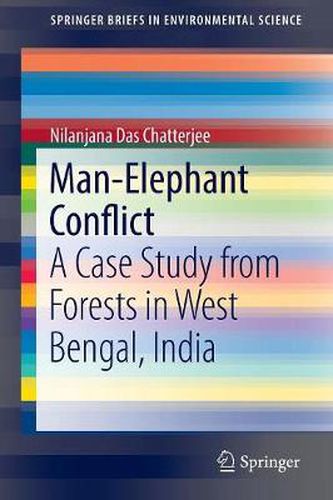Readings Newsletter
Become a Readings Member to make your shopping experience even easier.
Sign in or sign up for free!
You’re not far away from qualifying for FREE standard shipping within Australia
You’ve qualified for FREE standard shipping within Australia
The cart is loading…






This title is printed to order. This book may have been self-published. If so, we cannot guarantee the quality of the content. In the main most books will have gone through the editing process however some may not. We therefore suggest that you be aware of this before ordering this book. If in doubt check either the author or publisher’s details as we are unable to accept any returns unless they are faulty. Please contact us if you have any questions.
This book sheds new light on the causes and consequences of elephant migration in the Panchet Forest Division of Bankura District in West Bengal, India- an area characterized by fragmented forested landscape modified by agriculture and settlement expansion. Anthropogenic activities result in the decline in quality and coverage of forests, loss of biodiversity and removal of forest corridors which ultimately restrict or modify the movement of elephants causing a forceful change of their habitats.
A major objective of this monograph is to identify the characteristics of man-elephant conflicts in terms of land use change, cropping patterns, ecological characteristics of the fragmented dry deciduous forest, trends and patterns of elephant migration, and livelihood patterns of the inhabitants in the affected areas. Readers will discover insights into changes in the behavioral pattern of elephants and local people in the conflict ridden zones, and how this influences food selection. Through this book we also learn about rational management strategies that can be employed on the local and national level to mitigate human-elephant conflicts. Ecologists, landscape conservation planners and environmental managers engaged in the conservation of large vertebrates in fragmenting and human-dominated landscapes will find this book valuable.
$9.00 standard shipping within Australia
FREE standard shipping within Australia for orders over $100.00
Express & International shipping calculated at checkout
This title is printed to order. This book may have been self-published. If so, we cannot guarantee the quality of the content. In the main most books will have gone through the editing process however some may not. We therefore suggest that you be aware of this before ordering this book. If in doubt check either the author or publisher’s details as we are unable to accept any returns unless they are faulty. Please contact us if you have any questions.
This book sheds new light on the causes and consequences of elephant migration in the Panchet Forest Division of Bankura District in West Bengal, India- an area characterized by fragmented forested landscape modified by agriculture and settlement expansion. Anthropogenic activities result in the decline in quality and coverage of forests, loss of biodiversity and removal of forest corridors which ultimately restrict or modify the movement of elephants causing a forceful change of their habitats.
A major objective of this monograph is to identify the characteristics of man-elephant conflicts in terms of land use change, cropping patterns, ecological characteristics of the fragmented dry deciduous forest, trends and patterns of elephant migration, and livelihood patterns of the inhabitants in the affected areas. Readers will discover insights into changes in the behavioral pattern of elephants and local people in the conflict ridden zones, and how this influences food selection. Through this book we also learn about rational management strategies that can be employed on the local and national level to mitigate human-elephant conflicts. Ecologists, landscape conservation planners and environmental managers engaged in the conservation of large vertebrates in fragmenting and human-dominated landscapes will find this book valuable.